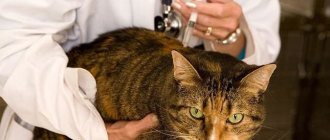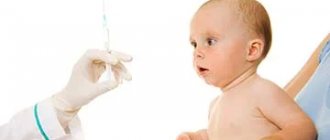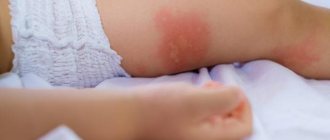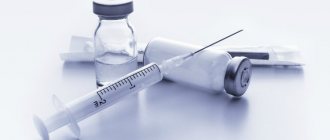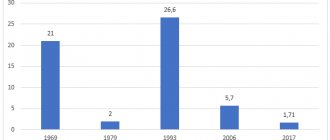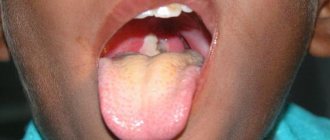To prevent child mortality from dangerous infectious diseases at an early age, the child is given complex DPT vaccinations. It is called complex because it initiates the production of antibodies against pathogens of several diseases, therefore, both domestic and foreign DPT vaccines include multidirectional components. The abbreviation DPT stands for adsorbed pertussis-diphtheria-tetanus. From the name it becomes clear what pathogens it is designed to fight.
Doctors use different drugs for vaccination. This takes into account:
- composition of the drug;
- manufacturer;
- baby's age;
- the presence of additional active components that ensure the production of antibodies against other bacteria or viruses.
To prevent diphtheria, whooping cough and tetanus, several types of Russian and foreign drugs are used:
- liquid vaccine produced by RF (Russia);
- a Russian-made drug “Bubo-Kok”, which additionally contains the surface antigen of the hepatitis B virus;
- Belgian "Infanrix";
- the French "Pentaxim", also aimed at creating immunity against polio and infections caused by Haemophilus influenzae;
- French "Tetracok", which includes an inactivated vaccine against polio (strains of the 1st, 2nd and 3rd types).
Choosing a drug based on its composition helps reduce side effects from vaccination, such as an allergic reaction.
What is included in the Russian DTP vaccine
The domestic DPT vaccine is available in ampoules, each of which is designed for one dose. 1 ml of the drug contains:
- 20 billion killed pertussis germs;
- diphtheria toxoid – 10 units;
- tetanus toxoid – 30 units;
- merthiolate (thiomersal) – preservative.
The pertussis component is presented in the form of whole inactivated bacteria. It is the most reactogenic. Most of the complications that arise are associated with this component of the vaccine.
Diphtheria and tetanus are diseases that are dangerous primarily due to the effects of toxins released by bacteria. Therefore, the drug does not contain bacteria or their parts, but the toxoids they produce.
The domestic vaccine contains thiomersal, an organometallic mercury compound. It is used as an antiseptic and is in demand in cosmetology and pharmacology. In large doses, it is toxic and has allergenic, mutagenic and carcinogenic properties. The substance is prohibited as a component of children's medications in the European Union, the USA and some others.
One vaccination dose contains only 0.05 mg of thiomersal, which is considered a safe concentration for a child. It is eliminated from the baby’s body within 3-7 days (completely in a month).
There is a version about a direct connection between mercury-containing compounds and the development of autism spectrum disorders. However, clinical observations have proven that abandoning the Russian DTP vaccine, which contains thiomersal, has not led to a decrease in the incidence of autism in children. It has received WHO approval and is safe to use.
The domestic product has proven itself well in practice. The DPT vaccine consists of whole cells of pertussis microbes, unlike imported analogues. On the one hand, this causes more intense side effects, on the other, its effectiveness is estimated to be 3-4 percent higher. In addition, it costs less than foreign analogues.
Another Russian vaccination drug, produced by the Combiotech company, is used in pediatrics - Bubo-Kok. In addition to pertussis (10 billion bacteria), diphtheria (15 units) and tetanus (5 units) components, it contains 5 mcg of HBS protein, the hepatitis B viral antigen.
Tetanus
Tetanus is a severe bacterial infection with a contact transmission mechanism, which is characterized by damage to the nervous system with the development of convulsions and tonic muscle tension. The infection is transmitted by contact. The microbe is widespread in nature, especially in agricultural areas. It is found in soil, water, and house dust. Often it is an inhabitant of the intestines of animals, sometimes humans. Tetanus bacillus can form spores that are resistant to high and low temperatures and antiseptic solutions.
The tetanus bacillus acquires its pathogenic properties in the absence of oxygen (anaerobic environment). Getting into the wound from contaminated surfaces, the microbe begins to multiply and release a toxin. The toxin enters the nervous system through the blood. The clinical picture is developing. From infection to the first symptoms it takes approximately 1 to 3 weeks. Initially, the muscles of the face and head are affected - a sharp muscle spasm occurs. Then the changes spread to the trunk and limbs, and convulsions appear. Muscle contractions can be so intense that they injure joints and ligaments. Damage to the muscles of the heart and respiratory tract is common.
In modern conditions, the patient dies from tetanus in approximately 20% of cases. The infection is especially dangerous in children of the first year of life. Mortality reaches 90-95%. Timely treatment can reduce mortality and reduce the manifestations of the disease. However, even with its use, recovery occurs only after 2-4 months; some consequences remain irreversible for the nervous system.
Tetanus is a very dangerous infection. It is still not uncommon to encounter tetanus bacillus spores in nature.
Main properties of DTP
DPT contains active ingredients designed to develop specific immunity in the baby to such dangerous infectious diseases as tetanus, whooping cough and diphtheria. After pathogenic agents enter the body, bacteria and toxoids imitate the onset of the disease (in a weakened form). Once pathogenic cells are identified, the immune system begins to formulate means to combat them. This takes some time, but the algorithm of actions is remembered. With subsequent infection, the body mobilizes the used tools, and the defeat of infectious agents occurs much faster.
This is one of the first mandatory vaccinations that is given to every child, starting from the age of three months. The fact that the baby has been immunized gives him the right to attend preschool institutions.
Diphtheria
Diphtheria is a bacterial infection characterized by specific changes in the oropharynx and a pronounced toxic syndrome. Diphtheria is transmitted by airborne droplets (from a patient or a carrier during breathing), less often by contact (from contaminated objects). Infection occurs approximately 2-10 days from the moment of contact.
Diphtheria is characterized by pronounced changes in the oropharynx. The throat turns red, then becomes covered with a dense fibrin film, which is difficult to separate from the mucous membranes, and sometimes makes breathing difficult. Diphtheria of the larynx is accompanied by hoarseness and loss of voice, difficulty breathing, and in some cases bleeding.
The diphtheria bacillus is an infectious agent that can produce a toxin. Under its influence, a toxic syndrome develops in the body - swelling of the upper respiratory tract and subcutaneous fat. At the same time, patients feel clearly unwell: high fever, difficulty breathing, headaches. In addition, the disease is often complicated by myocarditis and pathology of the nervous system (encephalitis). To treat diphtheria, antibiotics are used, as well as antitoxic serum or immunoglobulin.
Diphtheria is now rare. It's not very contagious. But this disease is serious, and in the pre-vaccination era it was in first place as the cause of child mortality.
Instructions for use of the vaccine
The drug is supplied in 0.5 ml ampoules (single dose). The contents are a gray-white suspension; sediment may form in the vessel.
Injections should only be performed with a disposable syringe. Before use, the drug should be shaken well and heated to body temperature in the hands. The injection is given only intramuscularly; subcutaneous administration of the vaccine is unacceptable. Doctors do not recommend injecting the mixture into the buttock, as there is a high probability of damage to the sciatic nerve. It is better to vaccinate children in the thigh.
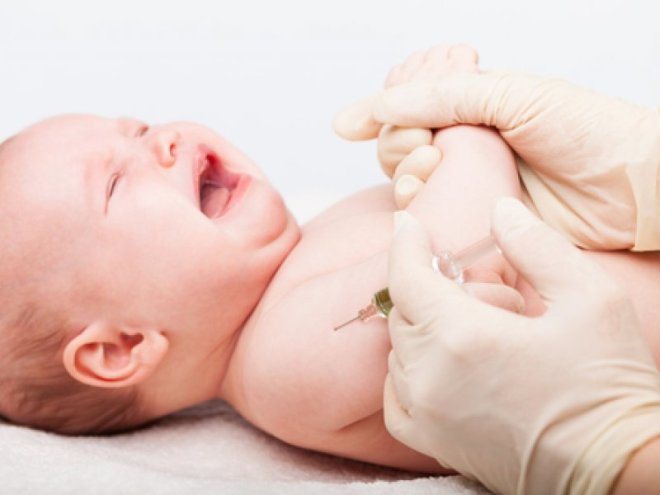
An opened ampoule cannot be stored; it must be disposed of.
It is not allowed to use vaccinations of this type if:
- the ampoule has lost its integrity;
- the period of use of the drug has expired;
- there is no marking on the ampoule;
- the color and appearance of the mixture have changed.
After vaccination, the nurse must enter into the patient’s card all information about the date of vaccination, the number and date of registration of the vaccine, the manufacturer and expiration date of the drug.
Moderate and severe side effects
More serious side effects cannot be ruled out. They are much less common:
- Body temperature can rise to 39–40 degrees.
- Febrile seizures may occur.
- The injection site will become significantly red, exceeding 8 centimeters, and swelling of more than 5 centimeters will appear.
- Diarrhea and vomiting will occur.
If such reactions to the vaccine occur, the child must be shown to a doctor immediately.
In very rare cases, more severe adverse reactions may occur:
- Anaphylactic shock.
- Quincke's edema.
- Hives, rash.
- Convulsions with normal body temperature.
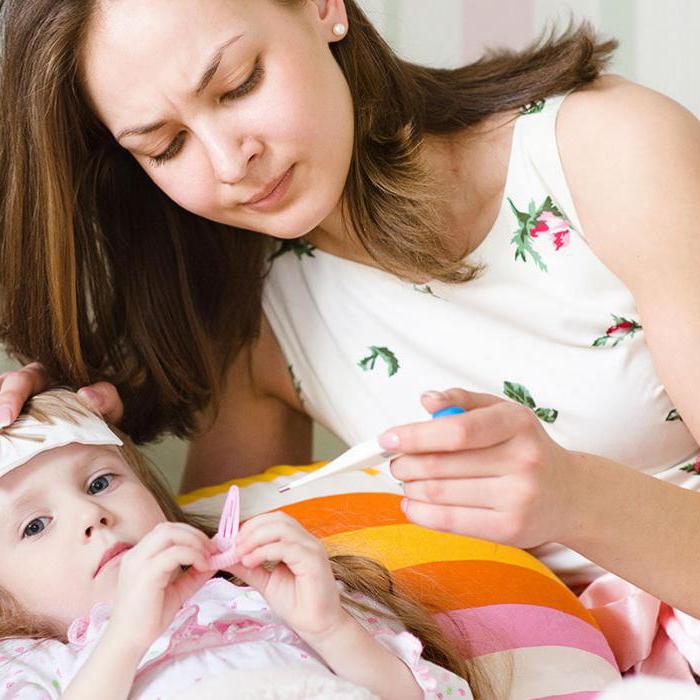
DTP is a vaccine (Komarovsky especially notes this), which causes such side effects in one case in a million.
This reaction may appear in the first 30 minutes after the injection. Therefore, the doctor recommends not leaving immediately after vaccination, but staying near the medical facility during this time. Then you should show the child to the doctor again. All this is done so that it is possible to provide the necessary assistance to the baby.
Existing contraindications
The administration of tetanus and diphtheria toxoids is necessary for every child. If he was previously diagnosed with whooping cough and has had it, then he needs to choose a drug that does not contain antigens of this disease. An example of a vaccine without a pertussis component is ADS.
Absolute contraindications to DTP vaccination:
- HIV status;
- tuberculosis;
- hepatitis;
- severe diseases of the nervous system;
- convulsive syndrome;
- impaired blood clotting;
- severe allergic reaction to the DTP vaccine (with previous vaccinations);
- severe complications recorded during previous vaccinations;
- individual intolerance to the components of the drug.
Vaccination is postponed if the patient has signs of inflammatory processes, colds and infectious diseases, intoxication, fever, acute digestive problems, decreased appetite, or teething.
Whooping cough
Whooping cough is an infectious disease transmitted by airborne droplets. It manifests itself as a prolonged, intense, obsessive cough. The incubation period for whooping cough lasts from 1 to 2 weeks. After the disease develops, the patient can be a source of infection for up to a month. In addition, asymptomatic carriage is possible.
In children under one year of age, whooping cough infection often leads to attacks of respiratory arrest. And against this background, complications develop from the nervous and cardiovascular systems. In older children, the disease begins with the symptoms of a common cold: fever, runny nose, cough, redness of the throat. Then a long, painful paroxysmal cough develops. Attacks are sometimes accompanied by vomiting, hemorrhages in the skin of the face and conjunctiva, saliva and lacrimation, and swelling of the veins of the neck. This cough can last up to six months.
Antibacterial drugs are used to treat whooping cough. However, they can be effective only in the initial period, when whooping cough is almost impossible to distinguish from other acute respiratory viral infections. During the period of paroxysmal cough, antibiotic therapy is not effective. Treatment is carried out symptomatically and has virtually no effect on the duration of the cough.
Whooping cough is extremely contagious. It affects up to 95% of unvaccinated contacts. Even now, against the backdrop of universal vaccination, cases of whooping cough are not uncommon. The disease is especially dangerous in children who have not yet had time to get vaccinated for some reason.
Imported analogues
Foreign-made vaccines, such as the Belgian Infanrix and the French Pentaxim, contain tetanus and diphtheria toxoids. The difference from the Russian drug is that imported analogues use not whole, but fragmented pertussis microbes killed by formaldehyde. This reduces the manifestation of negative effects and somewhat reduces the effectiveness of antibody production.
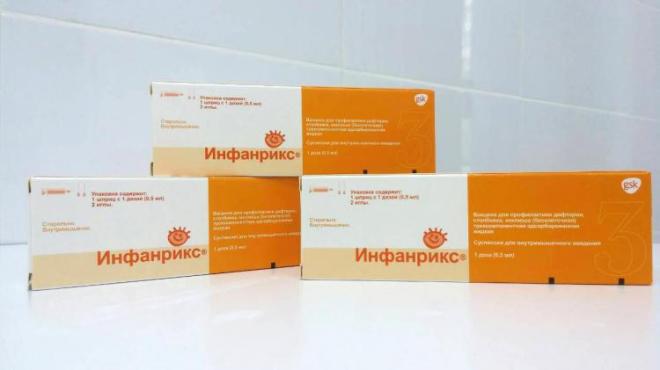
As excipients, such preparations contain aluminum hydroxide and phosphate, which enhance the response of the child’s body to the administration of the DPT vaccine. Foreign analogues do not contain thiomersal, since Western medicine has abandoned its use in medications intended for children due to the fact that it allegedly contributes to the development of autism.
In addition to standard components, antigens of other diseases may be added to imported vaccines. So, Pentaxim is given to a child to vaccinate him against diphtheria, tetanus, whooping cough, polio and hemophilic infections (meningitis, pneumonia, epigloditis and others). Infanrix IPV contains inactivated strains of three types of polio. It is believed that such complex vaccinations increase the load on the immune system of babies.
Formaldehyde is used as a preservative in such vaccination preparations, which in large doses can also be dangerous to humans.
Is it possible to take blood and urine tests?
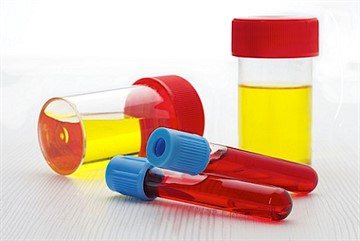
Experts recommend, if necessary, taking blood and urine tests before vaccination. In this way, you can get the most reliable result about the baby’s health condition.
As for getting tested after vaccinations, experts have different opinions here. Some believe that vaccination has no effect on the result, others suggest waiting a little.
To be sure of the accuracy of the result, it is not advisable to donate blood and urine on the day of the injection, as well as on the next day. And since the post-vaccination period is considered to be a period lasting 1-2 weeks, it is for this period that it is recommended to postpone laboratory tests.
How to choose the right vaccine to protect your child from unwanted consequences
When choosing vaccinations, you should pay attention, first of all, to their composition, effectiveness and the patient’s tendency to allergies.
It is believed that the domestic drug is more effective. Pediatricians usually prefer it.
Parents are frightened by the severe tolerance of the Microgen product. Although medical practice shows that complications are quite rare. If a child is prone to allergies, it is recommended to prefer imported vaccines.
You should take into account how the previous vaccination went. If the consequences were within normal limits, it is better not to experiment and continue the course of immunization or revaccination using the same composition.
What to do after vaccination
In order for a child to tolerate the vaccine more easily, it is necessary not only to prepare for it, but also to behave correctly after it. Namely, follow some rules:
- The child should not be given a bath or the injection site should be wet.
- Dr. Komarovsky recommends walking, but you should not walk in public places.
- Spend these 3 days at home without visitors, especially if the baby has a fever or is naughty.
- The air in the room should be moist and fresh.
- You should not introduce a new product into your diet a week before or after vaccination. If the baby is breastfed, the mother should not try new foods.
- Parents of children with allergies should be especially careful. Consult your doctor about which antihistamines to give before and after vaccination.

